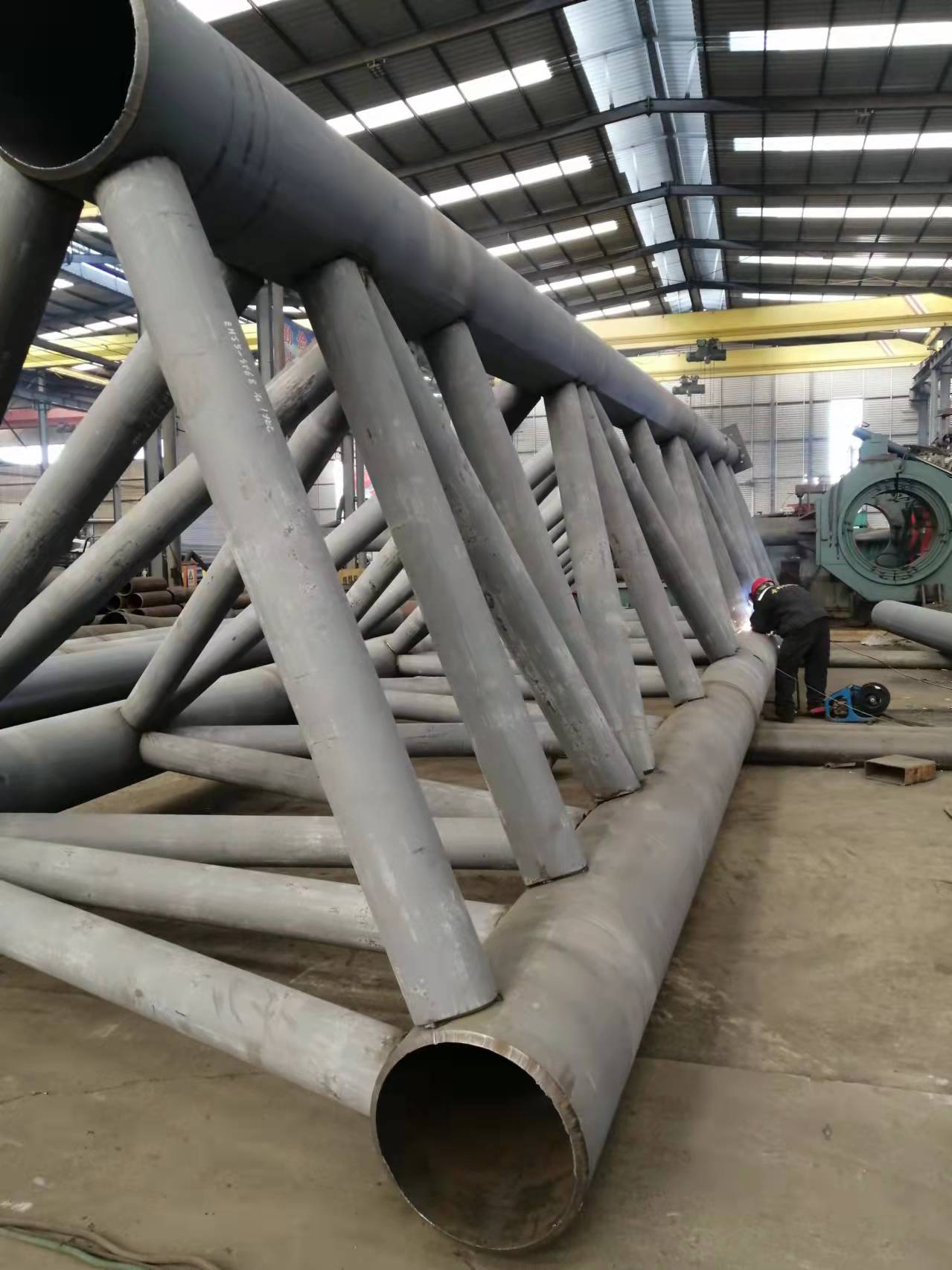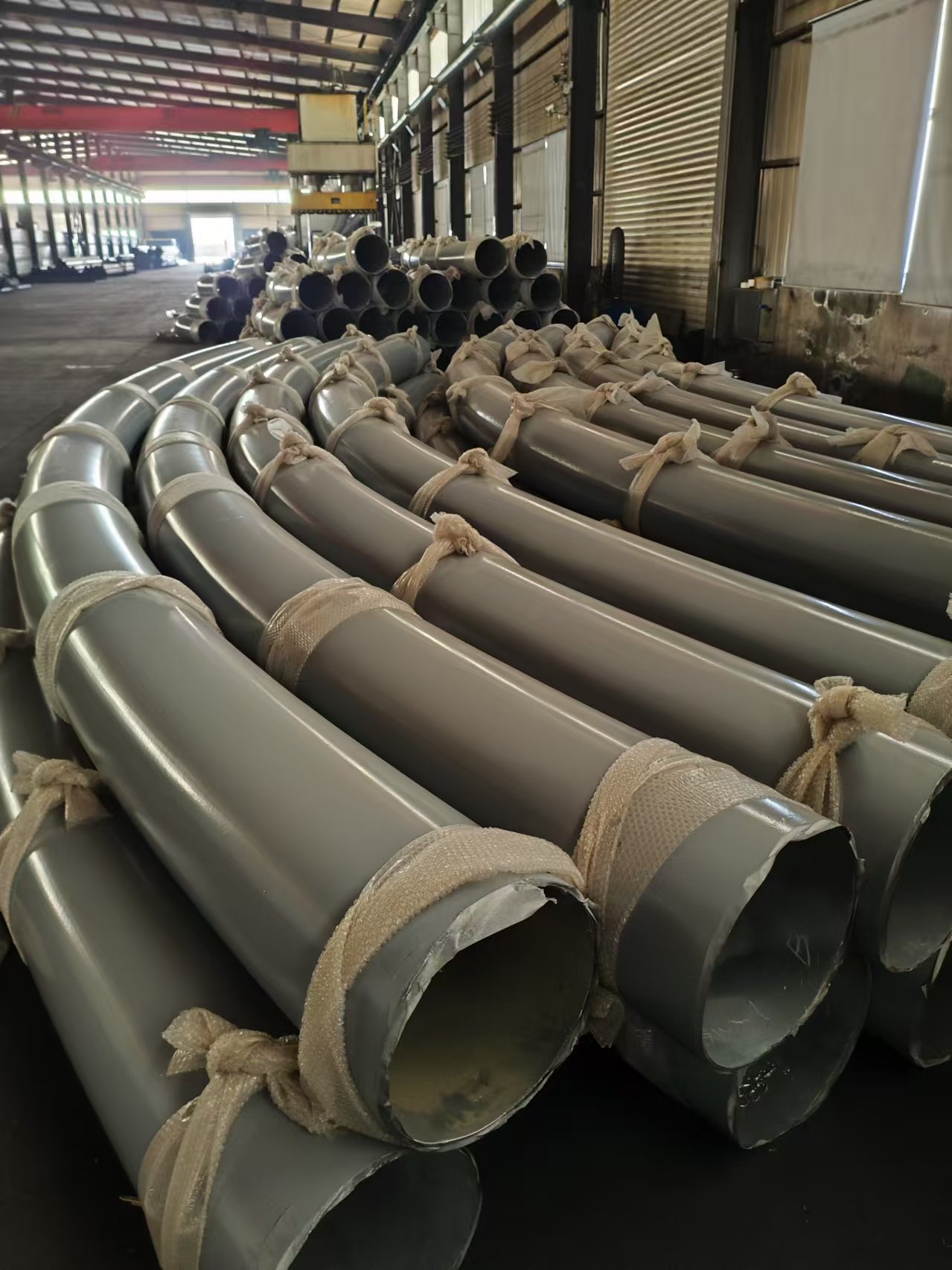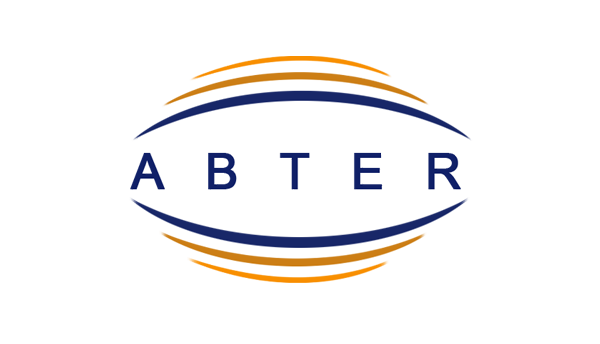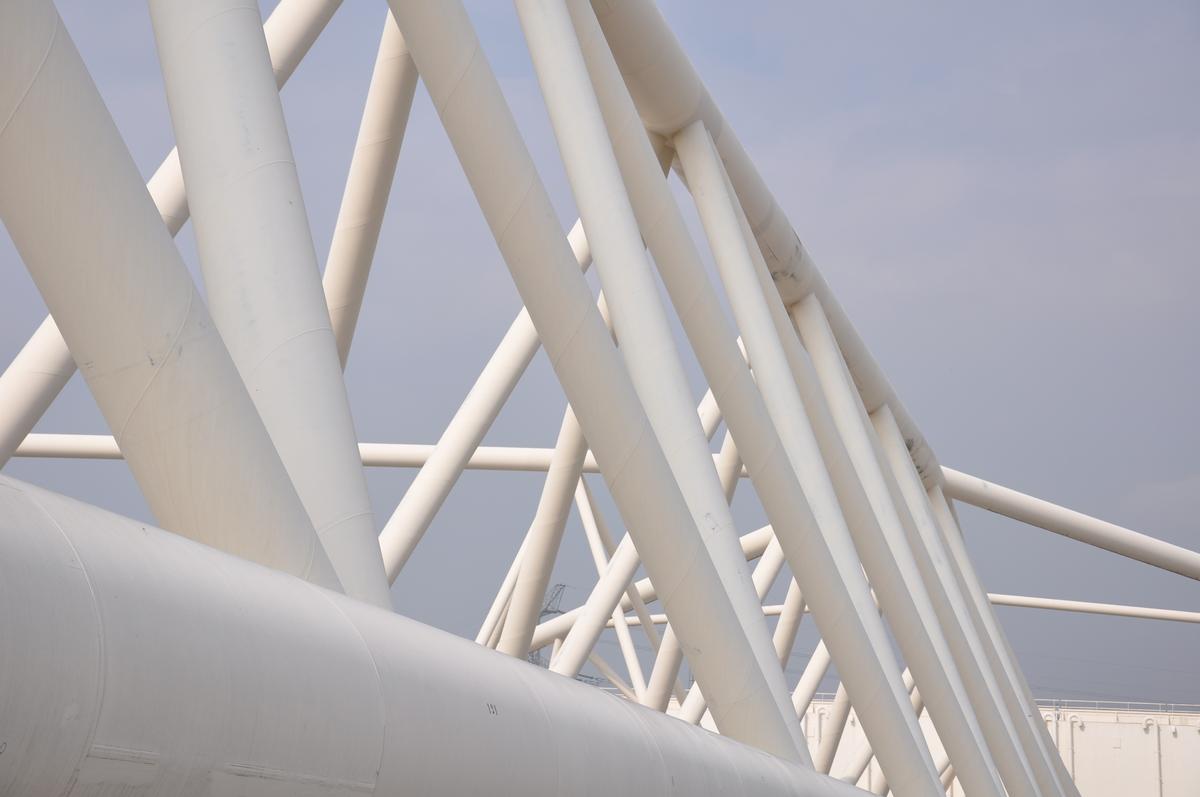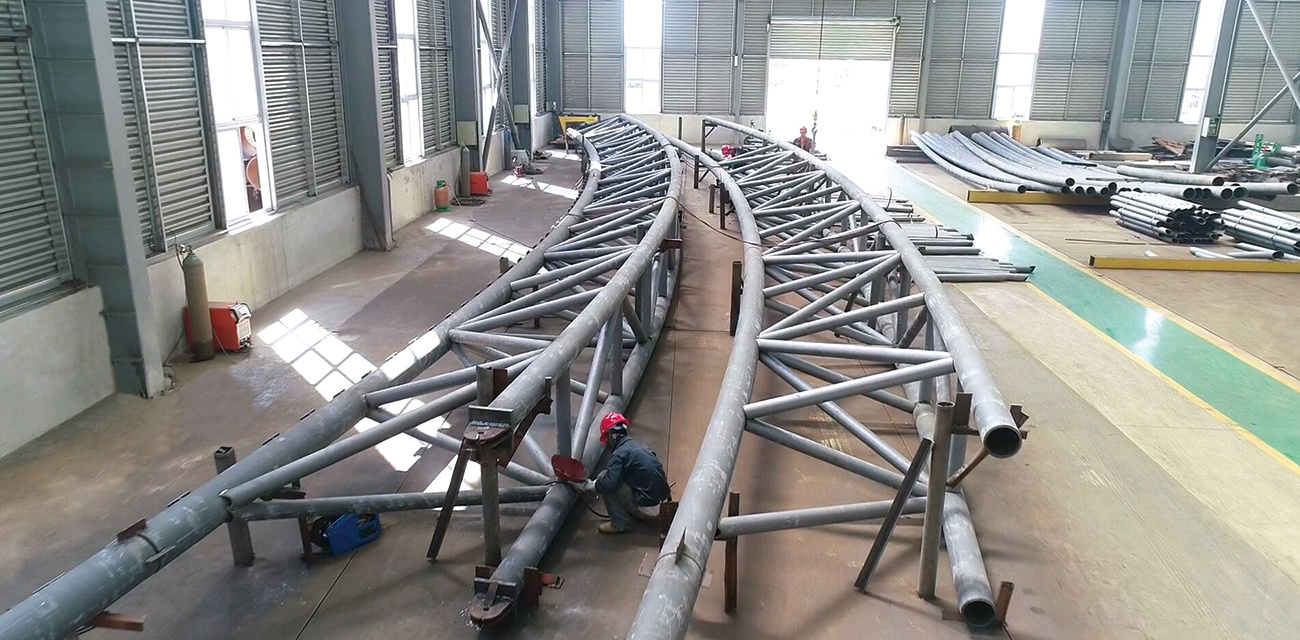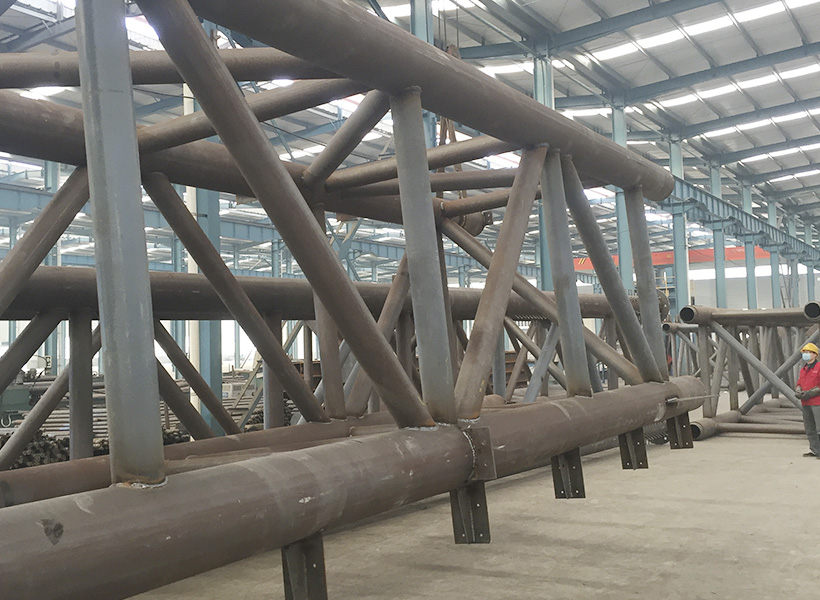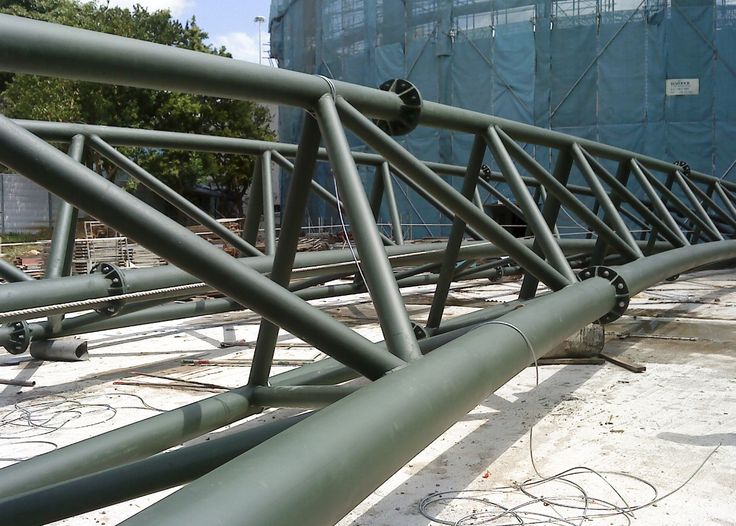Bouchette de tuyau de pliage en acier dans les structures en acier à long terme: Une analyse complète
Introduction to Steel Bend Pipe Roof Trusses
Steel bend pipe roof trusses are integral to modern structural engineering, en particulier pour les structures à longue portée nécessitant, Espaces sans colonne. Ces fermes utilisent des sections en acier tubulaire, Souvent plié ou incurvé,
to form triangulated frameworks that provide exceptional strength-to-weight ratios,
aesthetic flexibility,
and structural efficiency.
Long-span steel structures, généralement dépasser 20 mètres,
are used in applications such as airport terminals, arènes sportives, salles d'exposition, et installations industrielles.
The use of bend fermes de tuyaux enhances both the functional and architectural aspects of these structures,
allowing for complex geometries and efficient load distribution.
This analysis delves into the engineering parameters,
manufacturing considerations,
and performance comparisons of steel bend pipe roof trusses,
supported by data and technical insights.
Bend pipe trusses are distinguished by their use of seamless or welded steel pipes,
which are bent into specific shapes to form chords and web members.
The bending process introduces unique mechanical properties,
such as enhanced resistance to buckling and improved aesthetic appeal,
compared to traditional straight sections.
The primary materials used include high-strength carbon steels like Q355B or ASTM A500,
which offer superior tensile and compressive properties.
The design of these trusses must account for factors such as load conditions, longueur de travée,
joint detailing,
and environmental influences,
all of which are critical to ensuring structural integrity and safety.
Engineering Parameters and Design Considerations
The design of steel bend pipe roof trusses involves a detailed understanding of structural mechanics, propriétés des matériaux,
and load interactions.
Key engineering parameters include span-to-depth ratio,
pipe diameter and wall thickness,
bending radius, et les types de connexion.
The span-to-depth ratio typically ranges from 10 À 25,
with lower ratios resulting in deeper trusses that reduce chord forces but increase the length of web members.
For long spans (20
–100 meters),
a ratio of 15–20 is often optimal to balance material usage and structural efficiency.
Pipe diameters vary from 100 mm à 400 mm,
with wall thicknesses of 6–16 mm,
depending on the load and span requirements.
The bending process introduces residual stresses that must be carefully managed. According to industry standards, the deviation in pipe roundness should not exceed ±0.75%, and the bending degree should be limited to 3.0 mm/m to ensure dimensional accuracy. Welded joints, commonly used in bend pipe trusses, must comply with standards like BS EN 1993-1-8, which specify requirements for weld strength and joint stiffness. Par exemple, when welding pipes with unequal thicknesses, a bevel slope of ≤1:2.5 is recommended to minimize stress concentrations. En plus, fire resistance is a critical consideration, with trusses designed to meet standards such as NFPA 5000, often requiring protective coatings or intumescent paints to achieve specified fire ratings.
Manufacturing and Fabrication Techniques
The manufacturing of bend pipe roof trusses involves advanced processes to achieve precise geometries and structural reliability. Tuyaux en acier sans couture, preferred for their uniformity, are typically bent using hot or cold induction bending techniques. Hot bending, performed at temperatures around 850–950°C, allows for tighter radii but may alter the material’s microstructure, necessitating post-bending heat treatment to restore strength. Cold bending, suitable for smaller radii, preserves material properties but requires higher forces, increasing equipment costs. The choice of bending method depends on the pipe’s diameter, épaisseur du mur, and desired curvature.
Fabrication challenges include maintaining dimensional accuracy and ensuring high-quality welds. Automated parabolic cutting machines are often used to achieve precise end cuts for intersecting nodes, reducing the need for gusset plates and saving material. Par exemple, a study of a 36-meter span truss system reported a steel consumption of approximately 63 kg / m², significantly lower than traditional open-section structures. Joints are typically welded or bolted, with welded intersecting nodes offering a cleaner appearance but requiring stringent quality control to prevent defects. The use of hemispherical nodes for tree-shaped column supports, as seen in projects like the Guangzhou International Convention Center, enhances joint flexibility and reduces horizontal thrust.
Performance Comparison: Bend Pipe vs. Conventional Trusses
Bend pipe trusses offer distinct advantages over conventional trusses made from angle sections, I-hâtes, or hollow structural sections (HSS). A comparative analysis reveals that tubular sections, including bend pipes, reduce self-weight by 15–40% compared to angle sections for spans of 20–50 meters. This is attributed to the uniform distribution of material around the neutral axis, which enhances compressive and bending capacities. For a 35-meter span Howe truss, the use of circular hollow sections (CHS) resulted in a 15.2% weight reduction compared to angle sections, with square hollow sections (SHS (en anglais seulement)) and rectangular hollow sections (RHS) achieving up to 26.2% savings.
|
|
|
|
Square Hollow Section (SHS (en anglais seulement))
|
|
|
|
|
|
|
|
|
|
|
Compressive Strength (Mpa)
|
|
|
|
|
|
|
|
|
|
|
|
|
|
Fire Resistance Rating (hr)
|
|
|
|
The table above illustrates the superior performance of bend pipe trusses in terms of weight and deflection control. Cependant, fabrication costs for bend pipe trusses can be 10–20% higher due to the specialized bending and welding processes. Despite this, the overall cost savings from reduced material usage and simplified erection often outweigh initial expenses, particularly for spans exceeding 30 mètres.
Structural Behavior Under Load Conditions
The structural behavior of bend pipe roof trusses under various load conditions—dead, live, vent, and seismic—requires rigorous analysis. Modélisation numérique, as conducted for a 54-meter span truss, shows that maximum vertical displacement occurs at mid-span, typically around 31–33 mm under vertical loads, well within the engineering limit of 1/300 de la durée. Stress analysis indicates that maximum stresses remain below the yield strength of Q355B steel (355 Mpa), ensuring safety during construction and operation. For seismic loads, the vertical component of ground motion can significantly affect long-span trusses, particularly in near-fault zones. A parametric study using SAP2000 software identified axial force, vertical displacement, and base bending moment as critical parameters under vertical ground motion.
Charges de vent, calculated per ASCE 7-16, are another critical factor. For a truss with a 3.33-meter spacing, wind pressures on components and cladding can reach 1.2–1.5 kPa, necessitating robust bracing systems. Bend pipe trusses, with their high rigidity and large section radius of gyration, exhibit excellent resistance to lateral buckling, making them ideal for open structures like airport terminals. Cependant, thermal expansion and contraction must be addressed, as steel pipes are susceptible to temperature-induced stresses, potentially causing deflections of 1–2 mm/m in extreme climates.
Case Studies and Practical Applications
Practical applications of bend pipe roof trusses are evident in landmark projects. The Guangzhou International Convention Center utilized a steel pipe truss system with a 36-meter span, supported by tree-shaped columns, achieving a deflection of 60 mm (1/383 de la durée) and a steel consumption of 63 kg / m². De la même manière, the Laoshan Velodrome for the Beijing Olympics employed space tube trusses, demonstrating their ability to meet aesthetic and functional requirements. These projects highlight the versatility of bend pipe trusses in accommodating complex architectural forms while maintaining structural integrity.
Comparatively, conventional trusses in similar applications often require additional bracing or heavier sections, increasing material costs by 10–20%. The use of bend pipes allows for seamless integration of mechanical and electrical systems through the truss web, reducing the need for secondary framing. Cependant, challenges such as weld imperfections and the need for precise cutting equipment underscore the importance of skilled fabrication and quality control.
Conclusion and Future Directions
Steel bend pipe roof trusses represent a pinnacle of structural engineering for long-span applications, Offrir un équilibre de force, economy, et attrait esthétique. Their ability to reduce self-weight, accommodate complex geometries, and resist diverse loads makes them a preferred choice for modern construction. Future advancements in manufacturing, such as automated bending and laser-based welding, promise to further enhance their cost-effectiveness and precision. Cependant, ongoing research is needed to optimize bending processes, minimize residual stresses, and develop standardized design guidelines for various span and loading conditions. By integrating advanced simulation tools like SAP2000 and Tekla Structures, engineers can continue to push the boundaries of long-span steel structures, ensuring safety and sustainability in architectural innovation.
The choice of materials for steel bend pipe roof trusses is critical to their performance in long-span structures. High-strength low-alloy steels, such as Q355B (Élasticité 355 Mpa) or ASTM A500 Grade C, are commonly used due to their excellent tensile and compressive properties, as well as their weldability. These steels provide a favorable strength-to-weight ratio, which is essential for minimizing material usage in spans exceeding 20 mètres. Par exemple, a 40-meter span truss using Q355B pipes with a diameter of 219 mm and a wall thickness of 8 mm can achieve a weight reduction of approximately 20% compared to equivalent I-beam trusses. Cependant, material selection must also consider corrosion resistance, particularly for structures exposed to harsh environments, such as coastal arenas or industrial facilities. Galvanized or stainless steel pipes may be employed, though they increase costs by 15–25%.
Optimization of material usage involves finite element analysis (FEA) to determine the minimum pipe dimensions that satisfy load requirements while adhering to deflection limits (typically span/300). Par exemple, a 50-meter span truss subjected to a live load of 1.0 kN/m² and wind load of 1.2 kPa requires pipes with a minimum diameter-to-thickness ratio (D/t) of 20–30 to prevent local buckling. The use of high-strength bolts (grade 10.9) or full-penetration welds ensures robust connections, but these must be designed to handle dynamic loads, such as those from crowd-induced vibrations in stadiums, which can reach frequencies of 1.5–3.0 Hz.
Fabrication Precision and Quality Control
The fabrication of bend pipe trusses demands high precision to ensure structural integrity and aesthetic quality. Flexion d'induction, whether hot or cold, is the primary method for shaping pipes. Hot induction bending, conducted at 850–950°C, allows for radii as tight as 1.5D (where D is the pipe diameter), but it may reduce yield strength by 5–10% due to microstructural changes. Cold bending, performed at ambient temperatures, preserves material properties but is limited to radii of 3D or greater, requiring specialized equipment with capacities exceeding 500 KN. Post-bending inspections, comme les tests par ultrasons, are critical to detect micro-cracks or ovality, with acceptable tolerances defined by standards like EN 10219 (ovality ≤2%).
Welding is a critical aspect of fabrication, particularly for intersecting nodes where multiple pipes converge. The use of automated welding systems, such as robotic MIG or TIG welding, improves consistency and reduces defects. A case study of a 60-meter span truss revealed that automated welding reduced weld imperfections by 30% compared to manual methods, lowering the risk of fatigue failure under cyclic loading. Mesures de contrôle de qualité, including non-destructive testing (NDT) like radiographic or magnetic particle inspection, ensure compliance with standards such as AWS D1.1. These processes add 10–15% to fabrication costs but are essential for long-term durability.
Load Distribution and Structural Dynamics
The structural behavior of bend pipe roof trusses under complex loading conditions is a key consideration. Long-span trusses must resist a combination of dead loads (self-weight, roofing, and MEP systems), charges vives (occupancy or snow), wind loads, et forces sismiques. For a 45-meter span truss with a Pratt configuration, finite element modeling using software like ANSYS or SAP2000 indicates that maximum stresses occur at the chord-web intersections, typically 200–250 MPa under combined loading. The use of circular hollow sections (CHS) in bend pipe trusses enhances torsional rigidity, reducing lateral-torsional buckling risks compared to open sections like I-beams.
Dynamic analysis is crucial for structures like sports arenas, where crowd-induced vibrations or wind-induced oscillations can affect performance. Par exemple, a 70-meter span truss in a velodrome experienced a natural frequency of 2.1 HZ, close to the frequency of human-induced loads (1.5–2.5 Hz), necessitating dampers to mitigate resonance. Seismic design, per codes like IBC 2021, requires consideration of vertical ground motion, which can amplify axial forces in web members by up to 40%. Bend pipe trusses, with their uniform cross-sections, distribute these forces more effectively than angle trusses, reducing stress concentrations by 15–20%.
Analyse comparative: Bend Pipe Trusses vs. Alternative Systems
To further elucidate the advantages of bend pipe trusses,
a detailed comparison with alternative systems like space frames and cable-stayed roofs is warranted.
Space frames,
often used for spans exceeding 50 mètres,
distribute loads across a three-dimensional grid,
offering high redundancy but requiring 20–30% more steel than bend pipe trusses for equivalent spans.
Cable-stayed roofs,
while lightweight,
rely on high-tension cables that increase maintenance costs and are less suited for complex geometries.
Bend pipe trusses strike a balance,
offering flexibility in design and reduced material usage.
This table highlights the efficiency of bend pipe trusses in terms of material usage and construction speed, though space frames may be preferred for ultra-long spans (>100 m) due to their redundancy. Cable-stayed systems, while lightweight, require frequent cable tensioning, increasing lifecycle costs by 10–20%.
Environmental and Sustainability Considerations
Sustainability is a growing concern in structural engineering, and bend pipe trusses offer several advantages. Their reduced steel consumption lowers embodied carbon, with a 50-meter span truss emitting approximately 10–15% less CO₂ during production compared to angle trusses. Recycling potential is another benefit, as steel pipes are 100% recyclable, aligning with circular economy principles. Cependant, the energy-intensive bending process, particularly hot bending, can increase the carbon footprint by 5–10% unless powered by renewable energy sources.
To enhance sustainability, engineers can adopt modular designs, allowing for prefabrication and reduced on-site welding. A modular 30-meter span truss system, par exemple, reduced erection time by 25% and waste by 15% compared to traditional methods. En plus, the use of low-carbon coatings, such as water-based intumescent paints, can improve fire resistance while minimizing environmental impact. Future innovations, such as the integration of recycled steel or advanced composites, could further reduce the ecological footprint of bend pipe trusses.
Challenges and Mitigation Strategies
Despite their advantages, bend pipe trusses face challenges, including high initial fabrication costs, sensitivity to manufacturing defects, and thermal effects. The cost of specialized bending equipment and skilled labor can increase project budgets by 10–20%, particularly for small-scale projects. To mitigate this, standardized pipe sizes and bending radii can be adopted to streamline production. Weld imperfections, which can reduce fatigue life by up to 30%, require rigorous NDT and quality assurance protocols.
Thermal expansion, particularly in regions with temperature variations of 40°C or more, can induce stresses in fixed-end trusses. Expansion joints or sliding supports, designed to accommodate movements of 5–10 mm, can mitigate this issue. En plus, corrosion protection is critical for outdoor structures, with hot-dip galvanizing offering a service life of 50+ years in moderate environments, compared to 20–30 years for organic coatings.
Tendances et innovations futures
The future of bend pipe roof trusses lies in the integration of digital technologies and advanced materials. Building Information Modeling (BIM) enables precise coordination between design, fabrication, and erection, reducing errors by up to 20%. The use of machine learning in FEA can optimize truss configurations, predicting failure modes with 95% accuracy. En plus, the adoption of high-strength steels like Q460 (Élasticité 460 Mpa) could further reduce material usage by 10–15%, though their higher cost requires careful economic analysis.
Emerging fabrication techniques, such as 3D-printed steel nodes or laser-guided bending, promise to enhance precision and reduce waste. Par exemple, a pilot project in Shanghai used 3D-printed nodes for a 25-meter span truss, reducing fabrication time by 30%. These innovations, combined with sustainable practices, position bend pipe trusses as a cornerstone of modern long-span structural engineering.
